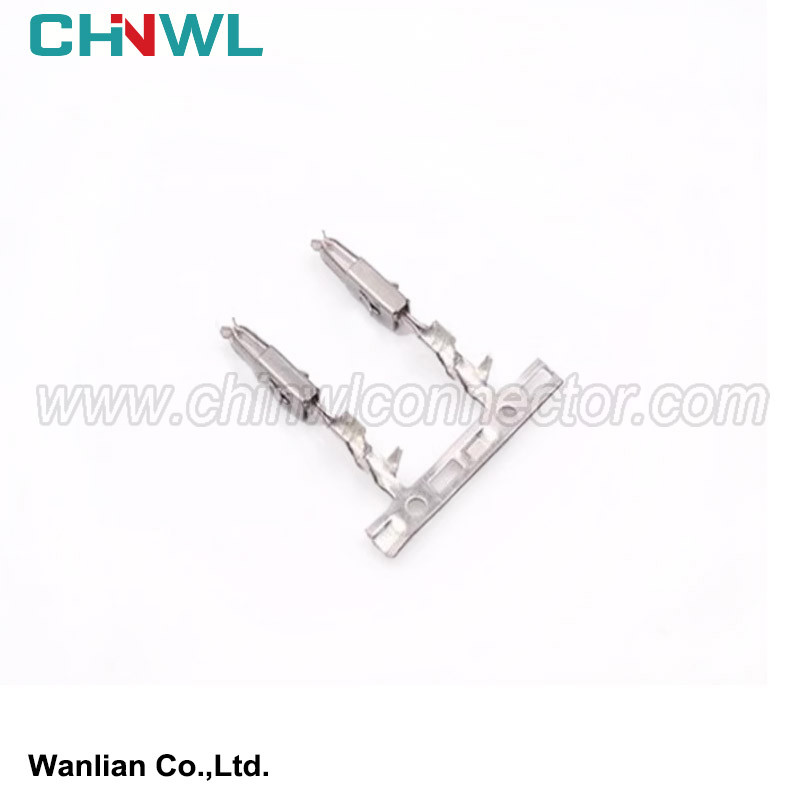

CHINWL #:
Mfr. #: 0-1241858-2 1241858-2
|
Wanlian part number: |
|
|
|
Original number: |
|
0-1241858-2 1241858-2 |
|
Gender: |
|
Female |
|
Specification: |
|
Copper Alloy, Brass, Phosphor Bronze, Nickel. |
|
Type: |
|
Terminal |
|
TUV, TS16949, ISO14001, ISO 9001, RoHS conform: |
|
Yes |
|
MOQ: |
|
No minimum order quantity |
|
Supply sample: |
|
Yes |
|
Customized drawing with Decal, Frosted, Print are available as request |
|
Yes |
|
Payment method: |
|
We accept Paypal, TT, Alipay, West Union etc. |
|
Transportation method: |
|
Air Transport: UPS, DHL, FEDEX etc; Sea Transport; Railway Transport; Freight Forwarding etc. |
|
Production Capacity: |
|
1000000pieces/Month |

01 definition of pressure connection point
The wire beam connection refers to the connection point of 2 or more wires in the line beam.
As shown in the figure below, this pressure contact (SP) consists of line 1 (Wire 1), Line 2 (Wire 2), and Line 3 (Wire 3). The hinge connection point inside the cable beam is the pressure connection point, also known as the Splice point, and the cable punch point.
02 type of pressure connection point
Auto wiring Splice points, commonly used methods include ultrasonic welding, U -shaped terminal pressure connection, etc.
Ultrasonic welding
The principle of ultrasonic metal welding is to use the vibration energy of the ultrasonic frequency (20-40kHz) to pass the vibration wave to the surface of two metal objects that need to be welded. Under the static pressure, the two metal surfaces rub The fusion between.
As shown in the figure above, the 50/60 Hz current is converted to 15, 20, 30, or 40 kHz electrical energy through the ultrasonic generator. The conversion of high -frequency electrical energy was once again converted into mechanical movements of the same frequency through the converter, and then the mechanical motion was transmitted to the welding head through a set of amplitude rod device that can change the amplitude. The welding head is transmitted to the received vibration energy to the junction of the welding workpiece. In the area, the vibration energy is converted into thermal energy through friction and melts the metal.
Ultrasonic welding can be used to connect the same materials or different materials, such as copper and aluminum. Because the metal is directly welded together, there is no need for additional materials, such as a tube, solder or welding. In addition, ultrasonic welding has a lower thermal stress (the welding temperature is far lower than the melting point of the part), so the performance of the welding material itself and the performance of the peripheral materials will not change, such as the insulation set remains complete.
Ultrasonic welding standard
The most authoritative welding standard SAE/USCAR-38 jointly released by the American Automobile Engineer Society and the American Automobile Investigation Commission has comprehensively defined the ultrasonic welding process between automotive cables and terminals, providing important reference for industry specifications.
The advantages and disadvantages of ultrasonic welding
The advantage of this method is that fast, energy saving, high fusion strength, good conductivity, no spark, near -cold processing, no need to use materials, high efficiency, good conductive performance, environmental protection and safety, is the development trend of wire beam contacts.
Simple instructions:
We have product Catalogue,please contact us on skype,WhatsApp or Email.
If you can't find a product on our website or catalog, We deal with over 10,000 items, our catalog doesn’t cover all products. And we are developing 100+ molds yearly, which means around 10 new products are created in our factory. So don’t go away, just send us your photo or part no, we’ll check for you.